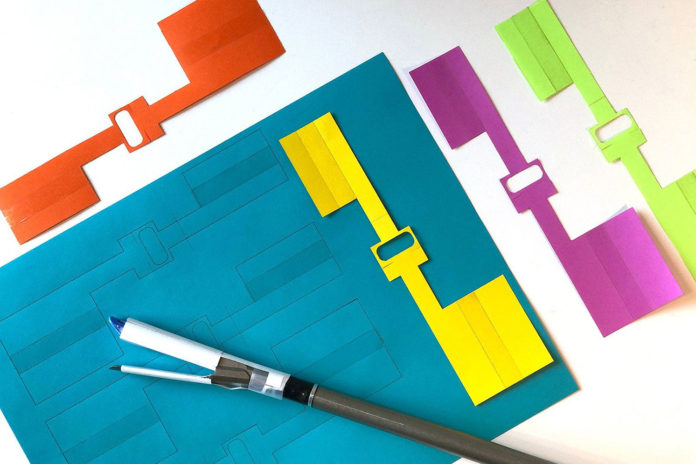Robot surgeons could one day have an easy way to treat internal injuries with minimal impact, less pain, and shorter recovery times compared to open surgery. MIT engineers have now designed a medical patch that can be folded around minimally invasive surgical tools and delivered through airways, intestines, and other narrow spaces to patch up internal injuries.
Inspired by origami, the patch resembles a foldable, paper-like film when dry. Once it makes contact with wet tissues or organs, it transforms into a stretchy gel, similar to a contact lens, and can stick to an injured site.
Although bioadhesive patches are already used for this type of surgery, they can wash away before an injury has fully healed, and, after application, they can also cause inflammation and scar tissue formation. The team aimed to engineer an alternative that would meet three functional requirements. It should be able to stick to the wet surface of an injured site, avoid binding to anything before reaching its destination, and once applied to an injured site, resist bacterial contamination and excessive inflammation.
Their design meets all three requirements in the form of a three-layered patch. A middle layer is a hydrogel-based adhesive, which is sandwiched between a silicone oil-coated material to prevent unintended sticking and an elastomer outer layer whose zwitterionic nature protects the patch against bacteria and other contaminants.
The developed medical patch is a tape that easily wraps around robotic instruments and adheres strongly to tissue even after being immersed in fluid for a long time. A test patch avoided contamination even after a month after its application. A robot might only need to apply light pressure or inflate a balloon catheter to apply a patch.
Any practical application can take a long time. However, the team envisions that the new bioadhesive could be manufactured in pre-folded configurations that surgeons can easily fit around minimally invasive instruments as well as on tools that are currently being used in robotic surgery. They are seeking to collaborate with designers to integrate the bioadhesive into robotic surgery platforms.
“We believe that the conceptual novelty in the form and function of this patch represents an exciting step toward overcoming translational barriers in robotic surgery and facilitating the wider clinical adoption of bioadhesive materials,” Sarah Wu says.
